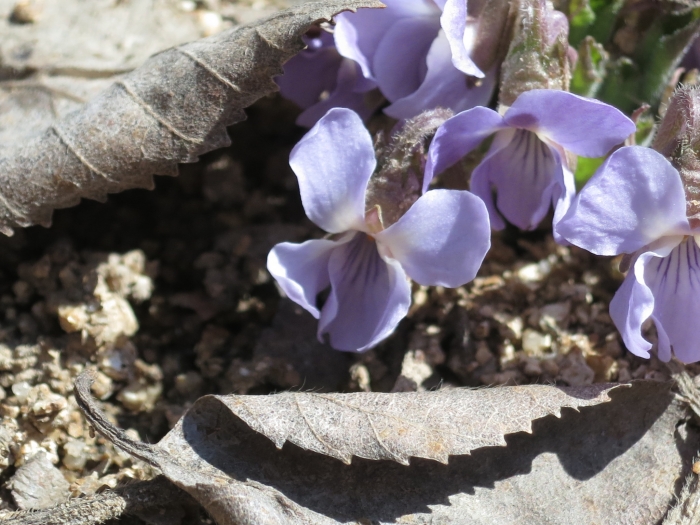Hill Violet
(Viola collina)
Hill Violet (Viola collina)
/
/

Repina Tatyana
CC BY 4.0
Image By:
Repina Tatyana
Recorded By:
Copyright:
CC BY 4.0
Copyright Notice:
Photo by: Repina Tatyana | License Type: CC BY 4.0 | License URL: http://creativecommons.org/licenses/by/4.0/ | Rights Holder: Repina Tatyana | Publisher: iNaturalist | Date Created: 2020-04-13T13:27:10-07:00 |

























Estimated Native Range
Summary
Viola collina, commonly known as Hill Violet, is a perennial herb native to a variety of habitats across Europe, including meadows, grassy slopes, and light deciduous woodlands. It is particularly adapted to calcareous soils. This species typically forms a low-growing clump reaching 4-6 inches (10-15 cm) in height and spreading out to about the same width. Hill Violet is characterized by its heart-shaped leaves and pale yellow flowers that bloom in the spring, providing an early source of nectar for pollinators. The flowers are modest in size but can be quite showy when planted en masse.
Hill Violet is appreciated for its early spring flowers and its ability to thrive with minimal care, making it a suitable choice for wildflower gardens, rockeries, and naturalized areas. It is also used as an underplanting for shrubs and trees. In cultivation, it requires partial shade to full sun, consistent moisture, and well-drained soils to perform best. While it is not prone to serious pests or diseases, it can suffer from root rot in overly wet conditions. Hill Violet can also be propagated easily from seed or division, allowing gardeners to spread its charming presence throughout their gardens.CC BY-SA 4.0
Hill Violet is appreciated for its early spring flowers and its ability to thrive with minimal care, making it a suitable choice for wildflower gardens, rockeries, and naturalized areas. It is also used as an underplanting for shrubs and trees. In cultivation, it requires partial shade to full sun, consistent moisture, and well-drained soils to perform best. While it is not prone to serious pests or diseases, it can suffer from root rot in overly wet conditions. Hill Violet can also be propagated easily from seed or division, allowing gardeners to spread its charming presence throughout their gardens.CC BY-SA 4.0
Plant Description
- Plant Type: Herb
- Height: 0.25-0.3 feet
- Width: 0.5-0.75 feet
- Growth Rate: Moderate
- Flower Color: Purple, Blue
- Flowering Season: Spring, Summer
- Leaf Retention: Deciduous
Growth Requirements
- Sun: Part Shade, Full Shade
- Water: Medium
- Drainage: Medium, Fast
Common Uses
Border Plant, Butterfly Garden, Groundcover, Low Maintenance, Rock Garden
Natural Habitat
Meadows, grassy slopes, and light deciduous woodlands, particularly on calcareous soils
Other Names
Common Names: Hill Violet, Bulgarian Violet
Scientific Names: , Viola collina, Viola atrichocarpa, Viola centronum, Viola centronum, Viola collina subsp. propera, Viola collina var. collina, Viola declivis, Viola gymnocarpa, Viola hirta subsp. collina
GBIF Accepted Name: